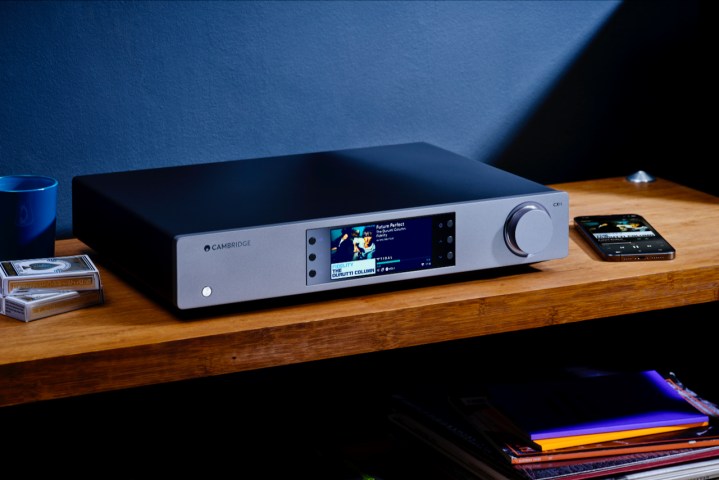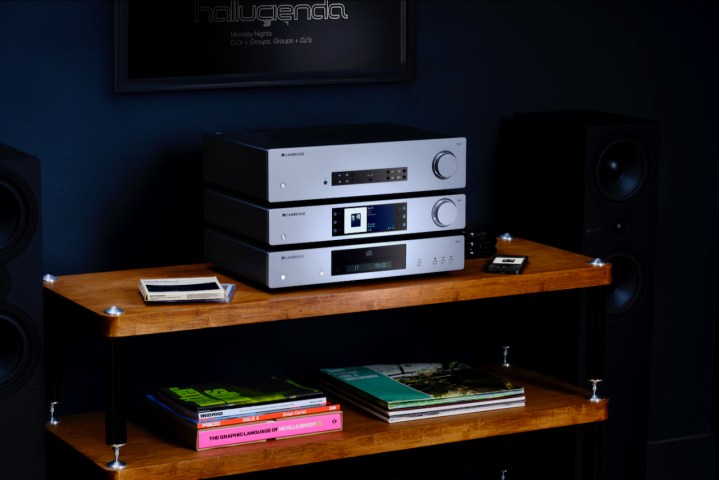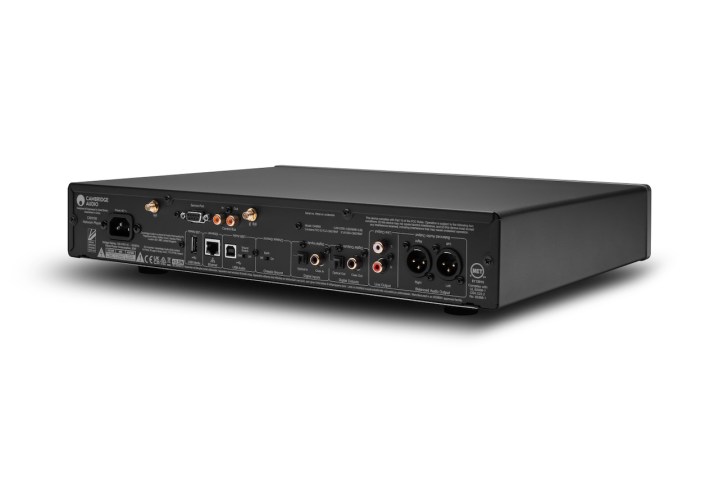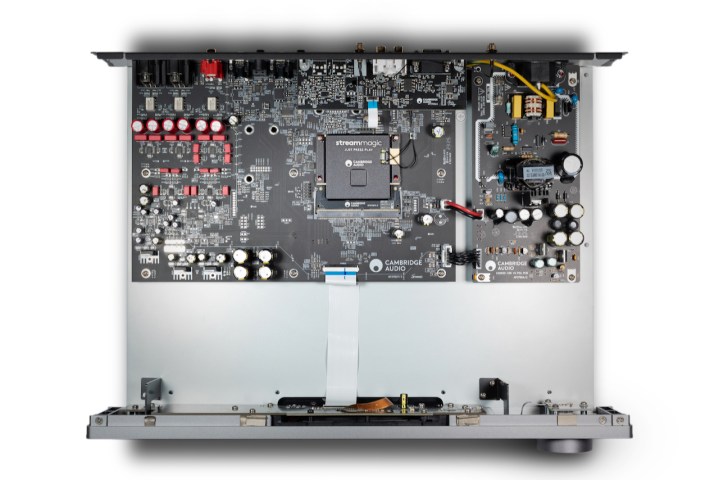
Fans of Cambridge Audio’s award-winning network music players are about to get a treat, as the British audio maker today launched its CXN100 Network Player, the long-awaited successor to its popular CXN V2. The redesigned player features a completely new DAC capable of handling 32-bit/768kHz, more precise and streamlined processing, built-in Wi-Fi and Bluetooth, and all new tuning by the company’s “engineering magicians.” The CXN100 goes on sale today for $1,099.
If you’re not sure what a network streamer is or why you’d need one, it’s basically one of the best ways to bring all of your digital music,
First up is the biggest change, from the CXN V2’s tried-and-true dual Wolfson WM8740 24-bit DAC (digital to analog converter) to the new ESS ES9028Q2M SABRE32 Reference DAC. The CXN V2 was capable of playing high-res files of up to 24-bit/192kHz, with upsampling up to 384kHz. The new SABRE32 DAC takes the CXN100 up a notch and is able to handle PCM digital signal inputs up to 32-bit/768kHz, with support for DSD 512 files.
Cambridge Audio says that the timing in the new DAC is so good that the CXN100 no longer needs a post-DAC filter “which further simplifies the signal path and ultimately results in precise, jitter-free, class-leading audio clarity,” according to a press release. The post-DAC analog stage has also been improved, reducing distortion and increasing the signal-to-noise ratio.

Physical connectivity options have largely stayed the same on the CXN100 and still include USB, Coaxial, and Toslink inputs as well as balanced XLR and unbalanced RCA analog outputs. On the wireless side, there’s still Chromecast and Apple AirPlay 2 built-in, but the CXN100 has added built-in Wi-Fi and Bluetooth connectivity that doesn’t require the additional BT100 dongle, which you had to buy separately on the CXN V2. The dongle, however, supported aptX, and Cambridge has confirmed with us that the the CXN100 does not, limiting things to just SBC and AAC Bluetooth support. However, with Wi-Fi and Ethernet connectivity options for high quality playback, the lack of aptX isn’t really an issue.
Still at the heart of the CXN100 is Cambridge’s proprietary StreamMagic Gen4 module and platform, which allows control of the system from its app or by remote control. The CXN100 includes built-in Spotify Connect, Tidal Connect, Qobuz, and Deezer, and now MQA compatibility, as well as access to hi-res internet radio thanks toMPEG-DASH support. As with the CXN V2, the CXN100 can also expand your music throughout your house and other devices tvia
- 1. The rear panel of the Cambridge Audio CXN100
- 2. The internals of the Cambridge Audio CXN100
Physically, the CXN100 has kept the same slim dimensions (16.9 by 3.4 by 12.2 inches), but increased the size of the high-res color screen on the unit’s face to a larger 4.76-inches (the CXN V2 had a 4.3-inch screen), so you’ll be able to see album artwork and track information more clearly, too.
“Even with CXN V2 still on the throne, we’ve not rested on our laurels,” says James Johnson-Flint, owner of Cambridge Audio. “We’ve taken the next step, and CXN100 represents the next generation of network player. It’s here to take the crown.”
The Cambridge Audio CXN100 is available now on the Cambridge Audio website and at retailers for $1,099.
Editors' Recommendations
- Cambridge Audio’s CXA81 Mk II amplifier gets a tune-up and a sweet new DAC
- What is a network music streamer and why do you need one?
- Bluesound gives its Node streamer a new DAC/headphone amp for its 10th birthday
- Spotify could launch its HiFi lossless audio tier any day now
- Deezer launches Sony 360 Reality Audio with a new stand-alone app





